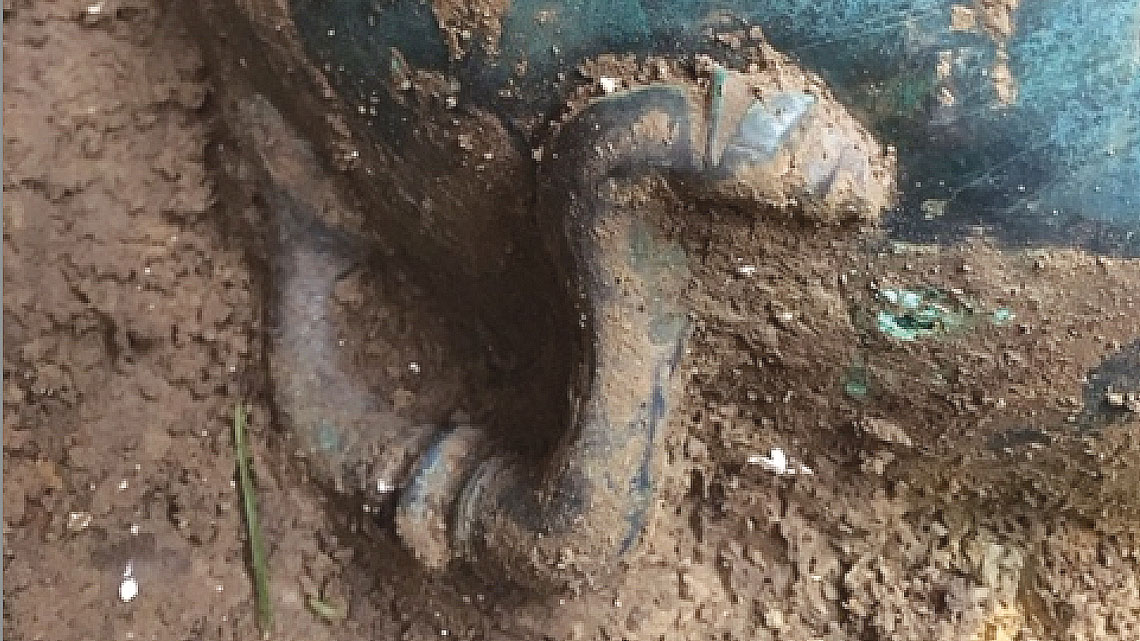
CSI: SittingbourneExcavation of Roman container from the Iron AgeCSI: Sittingbourne
Chemicals used to combat agricultural pests do not only act in the present. As they build up in the environment, they can also damage archaeological artifacts and thus affect the study of the past. Brazilian chemist Luciana da Costa Carvalho, from the University of Oxford, UK, identified signs of pesticide damage on a Roman bowl from the end of the Iron Age, between 43 and 410 A.D. Made from a copper alloy, the bowl was found on a farm in Kent, southeast England, in 2016, a site that has been used for agriculture since at least 1936. There was green and brown corrosion on the item. In the green patch, Carvalho and her collaborators identified the presence of chlorobenzenes and copper chlorides. Chlorobenzenes are synthetic compounds used in the chemical industry and in agricultural pesticides. Because they accumulate in the environment, they have been banned in the UK for over 50 years. The areas of brown corrosion contained diethyltoluamide, still used in insect repellents to this day (Scientific Reports, October 6). “Chlorobenzenes are associated with accelerated corrosion and represent a threat to the preservation of archaeological metals in the ground,” says Carvalho.
Republish
